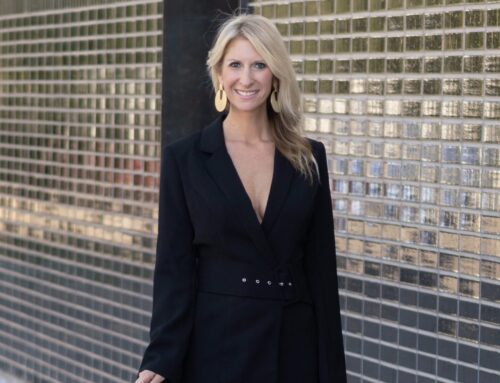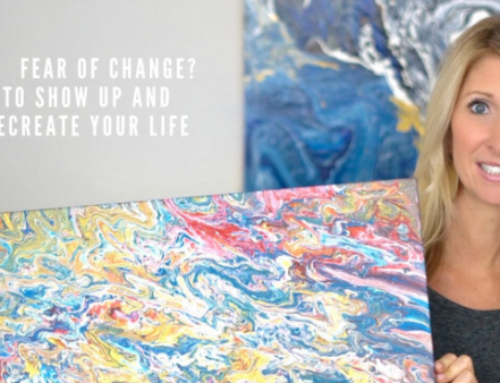When you’re stuck in a relationship you don’t want to be in, a job you dislike, a health issue you didn’t ask for, or a bad financial situation, it can feel like you’re helpless. It’s easy to get overwhelmed by your environment, like everything is out of your hands, and you can’t do anything to change your circumstances to change your future.
But what if I told you that that very helpless feeling is something that’s holding you back from making a change?
I have a formula I rely on for adapting environments. It’s called BCBE, and that stands for Belief, Capability, Behavior, and Expectancy. These four elements make up your environment, and if you can change them, you can change your environment.
Your beliefs are the core of who you are, and more importantly, who you think you are. Our beliefs dictate our behavior; if we believe we’re not capable of doing something, that is going to affect whether or not we can, in fact, do it—and whether or not we’re even willing to try.
Changing core elements of who you are isn’t easy. To begin, I use a process called “regression.” Regression involves helping clients to remember past experiences and sometimes past lives that are lodged in their unconscious memory. These are the memories that are crucial to shaping who they are, but only through regression can these memories be unearthed.
One client, Rachel, had been through a miscarriage, and she felt lingering doubts and fears about attempting another pregnancy. I guided her into the place in her body where she felt that feeling of fear—she felt it settle in her solar plexus, heart, and throat. We followed the energy back through her life, and she remembered a former life as a scrawny, impoverished man named Justo. He had a crooked arm and difficulty learning; he wasn’t able to work, and thus he felt like an outcast, a burden on his village. But Rachel realized this feeling of imperfection and brokenness was healed when Justo found a wife and had children—their love healed him.
Changing core elements of who you are isn’t easy. To begin, I use a process called “regression.” Regression involves helping clients to remember past experiences and sometimes past lives that are lodged in their unconscious memory. These are the memories that are crucial to shaping who they are, but only through regression can these memories be unearthed.
One client, Rachel, had been through a miscarriage, and she felt lingering doubts and fears about attempting another pregnancy. I guided her into the place in her body where she felt that feeling of fear—she felt it settle in her solar plexus, heart, and throat. We followed the energy back through her life, and she remembered a former life as a scrawny, impoverished man named Justo. He had a crooked arm and difficulty learning; he wasn’t able to work, and thus he felt like an outcast, a burden on his village. But Rachel realized this feeling of imperfection and brokenness was healed when Justo found a wife and had children—their love healed him.
“What was your purpose in that lifetime?” I asked Rachel.
“To find the love.”
“Was there anything left uncompleted?”
“The deformity,” she said. “I didn’t love myself. To learn to love myself. It’s vital. It’s there whether I accept it or not.”
The feelings she’d experienced as Justo echoed through her current situation with her miscarriage. She was scared of attempting another pregnancy because she didn’t feel worthy of loving or being loved. But when Rachel made the choice to accept herself and to love herself as she is, she realized that she had the power to choose to attempt another pregnancy or to continue her happy life with her husband. Her circumstances didn’t rule her; if she could accept herself the way she was, she would feel peace and contentment whether or not she had a baby.
Beliefs are closely linked with your capabilities because your capabilities aren’t just what you’re able to do; they’re what you believe you’re able to do.
Change can only happen when you believe you’re capable of making a difference. @RobinEmmerich (Click to Tweet!)
If you’d told me a few years ago that I’d be an artist, selling my works and receiving large commission projects, I’d have told you you were crazy. I didn’t believe I was capable of creativity; in fact, before I started painting, I used to say I didn’t have a creative bone in my body. But a trip to Italy and an opportunity to see works by the masters inspired me to see the creativity in us all. I believed I had the ability to paint, and this faith in myself led me to try and opened up a whole new world of art that is now one of my greatest passions.
But believing in yourself and what you’re capable of are nothing if you don’t also change your behavior. Your behavior is everything from your thoughts to your words to your body language to your actions.
Another client, named Greg, was studying for the bar exam, but he felt discontent and frustration from his wife. I regressed Greg back to a time when he was a young boy, named John. His mother has died, his father has left, and he has no one to care for him. He feels alone and unloved.
But then Greg remembers another time, as John grows, takes up work on a ship, travels, meets his wife, and they fall in love and marry. He finds peace and acceptance in their relationship and the family they build together; John is no longer that lost little boy.
I asked Greg what lessons he feels he has learned in his lifetime.
“That I can always rely on my inner self. To be patient, to trust myself, to have courage,” he said.
By remembering John’s life, Greg found that each time he chose to be alone, to separate himself from others—which Greg was doing while studying for the exam—he felt cut off and depressed. Every time he expressed positivity, sought out others, and found joy in family time, he felt connected and hopeful. Greg realized that the way he behaved had a direct correlation with how he experienced his relationships. He understood that he could control his environment through his behavior—by connecting with others, he in return felt connected, and the more he gave of himself, the more love he felt in return.
In order to change our beliefs, capabilities, and behavior, we also have to shift our expectations. If we expect sadness and misery out of life, we’re only going to allow ourselves to experience sadness and misery. Just look at the placebo effect. When you think something is going to make a difference, you can trick your mind into thinking it has. We can do the exact same thing with our environment—by expecting our circumstances to improve, we can see them in a different light.
The four pieces that make up our environment—belief, capability, behavior, and expectations—are all interconnected. You can’t change one without changing the other, and all four have to adapt in order to make a difference. As our beliefs change, so do our capabilities. As our capabilities change, we change our behavior—and as our behavior changes, what we expect from our life does as well.
Ultimately, what BCBE teaches us is that more of our environment is in our control than we might at first recognize. Whether it’s finding the underlying belief that’s affecting our behavior, like Rachel did, or choosing to see yourself of capable of new skills—like I did, with painting—or understanding that our behavior shapes the response we’re getting from the world, like Greg did, so much of the way we experience our environment is in our own minds. And if you can change your mind, you can change your environment—you just have to start by believing it’s possible.
Original Post on Positively Positive





